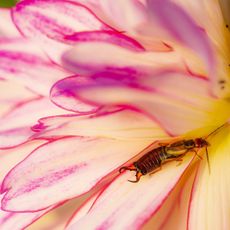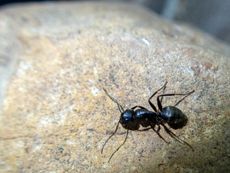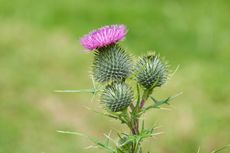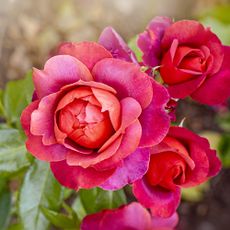Problems
If only things could always go right in the garden. The fact of the matter is, sometimes they don't. Pests, disease, environmental hazards and more can strike your plants. Learn what they are and how to prevent them here.
Explore Problems
Editor's Picks
-

Dealing With Heat Stress: How To Protect Vegetables In Hot Weather
Heat stress can cause serious problems for vegetables, leading to wilting leaves, shriveled fruit, and even plant death. Extra protection is essential.
By Susan Patterson
-

8 Insects That Eat Flowers And How To Get Rid Of Them
By Tonya Barnett
-

Identify Common Flower Pests And Diseases To Keep Your Plants Protected
Are you worried about wilting blooms, nibbled leaves or sickly florals? Here’s how to spot common flower pests and diseases so you can tackle and prevent problems
By Tonya Barnett
-

Slugs Eating Your Plants? Offer Them a Beer Instead
Slugs and snails love beer, but they're no match for a slug beer trap. Learn how beer will lure them away from your vegetables, flowers, and special plants like hostas.
By Laura Miller
-

How To Identify Poison Ivy To Prevent A Painful Rash – Plus, Common Lookalike Plants
One mistake you don’t want to make is not knowing what poison ivy and oak look like. Learn about the differences in some poisonous plants to avoid.
By Caroline Bloomfield
-

How To Get Rid Of Mosquitoes In The Garden: 9 Natural Ways To Make Them Buzz Off!
How to get rid of mosquitoes is on the minds of people in the summer in almost every region of the world. Learn how to repel the pests without toxic chemicals.
By Mary Ellen Ellis
-

CARPENTER ANTS - A DIY GUIDE
Carpenter ants don't eat wood and, with a bit of patience, you can eliminate them with homemade remedies.
By Caroline Bloomfield
-

What Is Horticultural Oil – How It Helps You Grow Healthier Plants
Learn about what horticultural oil is, when and where to use it and its benefits as a safe alternative to toxic chemical insecticides.
By Teo Spengler
-

Peppervine Control: Tips On Managing Peppervines In The Garden
Due to its vigorous root system, once peppervine takes hold, it will overtake a garden and choke out other plants in its path. Learn about controlling it.
By Shelley Pierce
-

What Is Hemp Dogbane: How To Get Rid Of Dogbane Weeds
Hemp dogbane weed is also known as Indian hemp. In earlier times it was used as a fiber plant. Today, it's considered a scourge in certain regions. Learn more about its control.
By Bonnie L. Grant
-

Buttercup Control: How To Kill Unwanted Buttercup Weeds In Your Garden
Its cheery yellow flowers are quite pretty, but buttercup has an insidious nature and will insert itself craftily into your landscape. Learn how to kill buttercup weeds.
By Bonnie L. Grant
-

Mugwort Control & Tips For Getting Rid Of Mugwort
Mugwort is a persistent weed but it is also a member of the Artemisia family of beneficial herbs. Mugwort control is a challenge due to its hardiness and spreading rhizomes. Learn about mugwort control.
By Bonnie L. Grant
-

Nimblewill Plant - Information On Nimblewill Treatment
Nimblewill grass pops up in turf lawn and looks a lot like turf grass, until it doesn't. Learn about some ways to control it.
By Nikki Tilley
-

What Is Windmill Grass: Learn About Windmill Grass Information And Control
Windmill grass is a prolific grower. Its windmill spikelets help to identify it.
By Bonnie L. Grant
-

Bull Thistle Control: Managing Bull Thistle Plants In Gardens
Learn how to get rid of bull thistle, a prickly biennial that grows freely in disturbed soils, pastures, and unmanaged spaces. Prevent this prolific weed from taking over your garden.
By Bonnie L. Grant
-

Wild Lettuce Weeds: Tips For Controlling Prickly Lettuce
Wild lettuce weeds are unrelated to lettuce. So what is wild lettuce and how can you get rid of wild prickly lettuce?
By Amy Grant
-

Invasive Buckthorn – How To Get Rid Of Common Buckthorn Bushes
Identify and eliminate the invasive and noxious buckthorn plants growing in your yard.
By Teo Spengler




